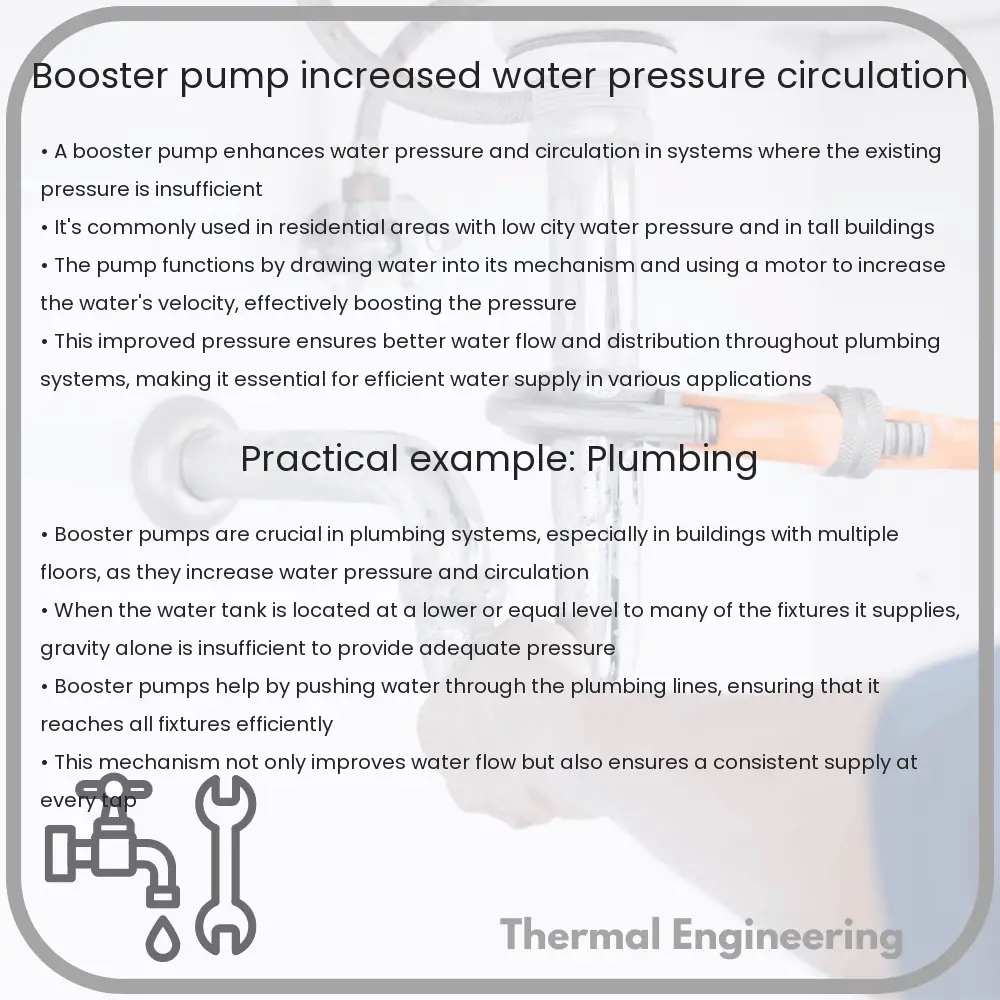Learn about booster pumps, essential for increasing water pressure and improving circulation in plumbing systems.

Understanding Booster Pumps: Enhancing Water Pressure and Circulation
Booster pumps are essential components in both residential and industrial plumbing systems, designed to increase water pressure and enhance circulation. Their primary function is to resolve issues related to low water pressure and inadequate flow rates in various applications, from sprinkler systems to high-rise buildings.
How Do Booster Pumps Work?
At its core, a booster pump adds pressure and velocity to water flowing through a piping system. The basic components of a booster pump include an electric motor, impeller, inlet, and outlet. The motor powers the impeller, which is a rotor designed to increase fluid speed and pressure. As water enters the pump, the rotating impeller forcibly pushes water through the outlet, thus boosting its pressure.
Types of Booster Pumps
- Single-stage: This type of pump has one impeller and is typically used for low to moderate pressure increase applications.
- Multi-stage: Equipped with two or more impellers, multi-stage booster pumps are used for higher pressure applications. Each stage incrementally increases the pressure of the fluid.
Applications and Benefits
Booster pumps are crucial in situations where the existing water supply does not have sufficient pressure to meet operational requirements. Common applications include:
- Residential buildings: Increasing water pressure for showers, faucets, and garden hoses in homes, especially in areas with low municipal water pressure or buildings with multiple floors.
- Commercial facilities: Supporting HVAC systems, firefighting systems, and irrigation systems in large scale operations such as hospitals, hotels, and schools.
- Industrial settings: Ensuring consistent, high-pressure water supply for processes that require substantial water flow and pressure.
- Agricultural irrigation: Enhancing the delivery of water in vast farming fields, maximizing crop irrigation efficiency.
In addition to increased water pressure and circulation, booster pumps contribute to a more reliable and efficient water supply system. They can help reduce energy consumption by operating only when necessary and can be integrated into existing plumbing systems with relatively simple modifications.
Selection Considerations
Choosing the right booster pump involves several factors to ensure optimal performance and cost-efficiency:
- Flow rate: This is the volume of water that needs to be pumped, typically measured in gallons per minute (GPM) or liters per minute (LPM). The required flow rate will depend on the number of outlets and the overall demand of the system.
- Pressure requirements: The necessary pressure increase, usually measured in pounds per square inch (psi) or bars, should be determined based on the application needs.
- Power source: Most booster pumps are electrically powered, but the voltage and phase compatibility must be considered when integrating into existing systems.
- Material compatibility: The construction materials of the pump should be compatible with the type of fluid being pumped to prevent corrosion or degradation.
By understanding the mechanics, types, and applications of booster pumps, consumers and industries can make informed decisions to better address their water pressure and circulation needs. These devices play a crucial role in ensuring efficient, high-performance water delivery systems across numerous applications.
Conclusion
Booster pumps are valuable tools in overcoming challenges associated with low water pressure and inadequate flow rates in diverse plumbing systems. Their ability to increase water pressure and improve circulation not only enhances performance but also contributes to system longevity and efficiency. Whether for residential comforts, commercial necessities, or industrial processes, understanding and selecting the right booster pump is key to maintaining robust and reliable water infrastructure.